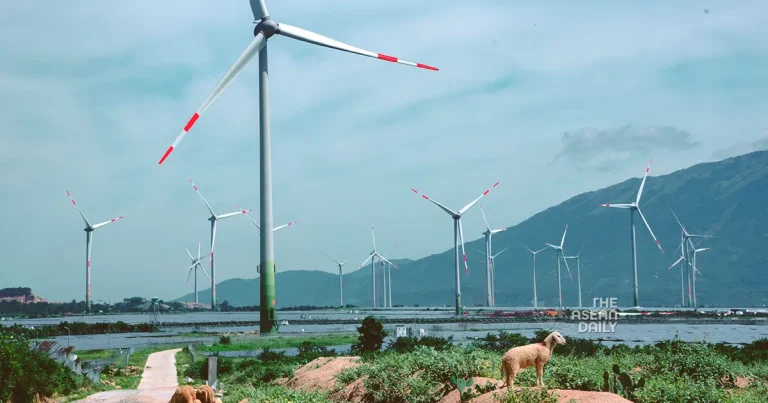24-10-2023 (SINGAPORE) Singapore has taken a significant step towards achieving its goal of importing 4 gigawatts (GW) of renewable energy by 2035 via electricity imports, with a new agreement to import 1.2 GW of low-carbon electricity, primarily wind power, from Vietnam. The imported electricity, transmitted through new subsea cables spanning approximately 1,000 kilometers, is expected to fulfill about 10% of Singapore’s annual energy needs.
This agreement follows similar deals with Indonesia for 2 GW of low-carbon electricity and Cambodia for 1 GW of electricity, including a mix of hydropower, solar, and potential wind power. Collectively, these imports are set to constitute around 30% of Singapore’s energy mix by 2035.
The Energy Market Authority (EMA) has granted conditional approval to Sembcorp Utilities to import electricity from Vietnam’s PetroVietnam Technical Services Corporation.
Speaking at the Singapore International Energy Week held at Marina Bay Sands, Second Minister for Trade and Industry Tan See Leng highlighted that Singapore has completed the first phase of a study with the United States, examining the existing and potential power interconnections in the Association of Southeast Asian Nations (ASEAN) region. The study also assesses the socio-economic benefits of regional energy connectivity.
The findings will demonstrate the advantages of energy interconnections, including emissions reduction, lower capital and production costs, enhanced resource adequacy, power supply resilience, and the creation of green jobs. A second phase of the study will focus on governance and financing frameworks for cross-border energy trading projects.
In addition, Tan encouraged more regional countries and multilateral partners to join this initiative. He pointed out that cross-border electricity trading across multiple countries can become a reality in Southeast Asia, as exemplified by the Laos-Singapore hydropower project, which commenced in June 2022. The project involves importing up to 100 megawatts (MW) of renewable energy via Thailand and Malaysia. Since its inception, approximately 270 gigawatt-hours of electricity have been exported to Singapore from Laos.
Tan also stressed the importance of the ASEAN Power Grid’s development, suggesting that more electricity import projects could be taken into consideration, accounting for energy security and cost considerations.
Despite solar power being the dominant source of renewable energy in Singapore’s imports due to land scarcity constraints, the country is actively pursuing its renewable energy goals. Singapore aims to achieve 2 GW-peak of solar power by 2030, accounting for less than 10% of its future energy mix. Solar deployment has already surpassed 1 GW-peak, making significant progress toward this target.
To maximize solar deployment, Singapore is exploring innovative approaches, such as building-applied photovoltaics that can be retrofitted or integrated onto the facades of housing blocks. Studies are also underway to assess perovskite or tandem solar cells with higher efficiency compared to conventional silicon ones.
Dr. David Broadstock, a senior research fellow and lead of energy transition at the Sustainable and Green Finance Institute at the National University of Singapore, sees an opportunity for Singapore to pursue even more ambitious quantities of renewable electricity imports beyond the 30% target. However, operational considerations, such as coupling solar with energy storage technologies due to its daytime availability, need to be addressed.




